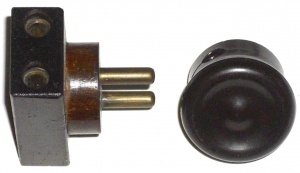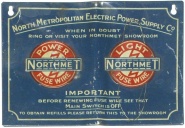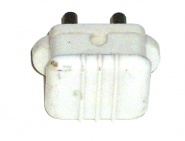Dating Old Electrics
Jump to navigation
Jump to search
Some dates - but may contain errors, and sometimes things did get installed later than they should strictly have been.
(If you grab that wooden adaptor, you do indeed get hold of live tubes that come very close to the surface.)
Cables
- Lead sheath cable: some say before 1948, some say it was still being installed in the 50s. On farms it was used later than this.
- TRS (Tough Rubber Sheath) 1945-1962
- Capothene (rubber insulated, polythene sheath): 1952-1960
- Ashothene cable: 1952 - 1960
- PVC inner PVC outer T&E style cables with no cpc (no earth wire) (lighting circuits): 1955-1966
- Imperial PVC cables: 1955 - 1971
- 2.5mm PVC/PVC T&E with 1mm cpc: 1971 - 1981
- Twin twisted flexible cords: before 1977
- Rubber/PVC mix T&E cable: 1958 to 1961
- CMA (Cable manufacturers association) cable: ceased in the 1940s
- Non-association (Nonazo) cable: pre apx 1948
- Aluminium cable: popularish in the 1950s, and to a lesser extent the 1970s
- Copper clad Aluminium cable:
- Maconite cable (very distinctive O--O shape): pre WW2
- One you'll probably never see: very thick bare soft iron wire, used from late 1800s to 1920s on 32v generator powered lighting systems. Shown in the 1945 Agatha Christie film 'And then there were none'
Earth wire in cables
- Separate bare copper earth wires run alongside twin cable:
- Black earth conductors: before 1966
- Green protective sleeving: before 1977
- Green & yellow earth sleeving: 1971 onwards
- Earth wires just twisted together at junctions:
Cabling methods
Dates aren't especially accurate yet in this section
- Cables fixed to wall with ceramic cleats (small plates with grooves to hold the wire): pre WW1
- Wooden trunking:
- Rubber singles in steel trunking: popular in 1950s, most likely used in early 1960s too
- Uninsulated metal cable clips/cleats: still in use in the 70s
Main earth bonding
- No main equiptential bonding conductor: before 1966
- 2.5mm main equipotential bonding conductors: 1971-1972
- 6mm main equipotential bonding conductors: 1966 - 1983
- 10mm main equipotential bonding conductors: post 1983
Fuseboards
- ELCB (Voltage operated circuit breaker): pre 1981
- Double pole fused switchgear on ac Installations: pre 1955
- Wood backed Wylex fuseboxes: still being installed in 1983
- Slate fuseboard with bare screws for fusewire links: in use in late 1800s, obsolete by the 1930s
- Wooden fusebox with wooden lid: standard in 1930s
- non-EEBAD installs (local earth rod but no ELCB or RCD): pre 1955
Sockets
- Accessories mounted on wooden pattress blocks: before 1966
- Round pin socket outlets: mostly before 1955, but sometimes used much later
- Square pin 13A sockets: post 1945 - may be on older wiring though
- 2 pin 5A sockets:
- No sockets upstairs: typical 1930s practice, but when this ceased the author doesn't know
- Sockets with no shutters:


